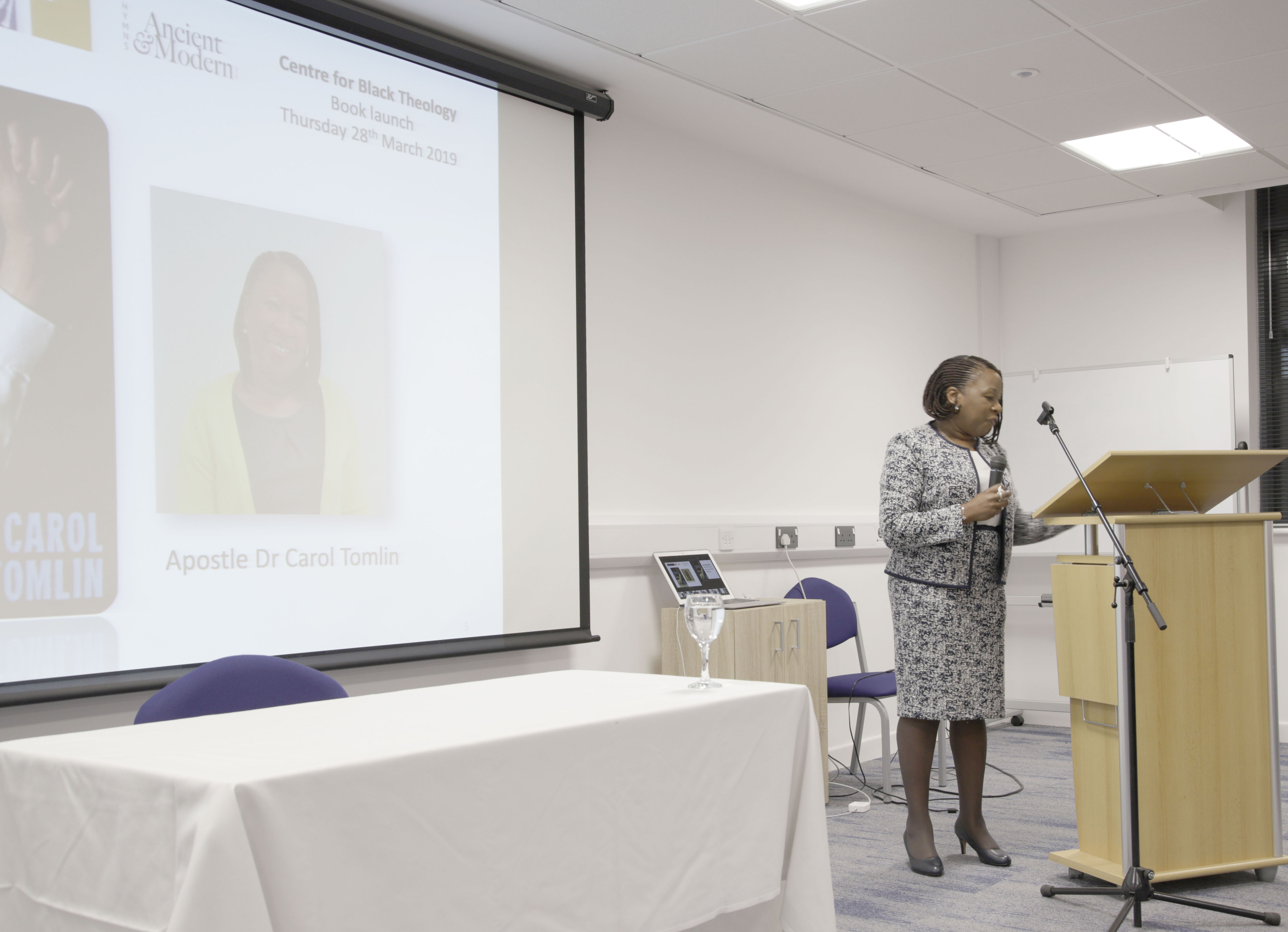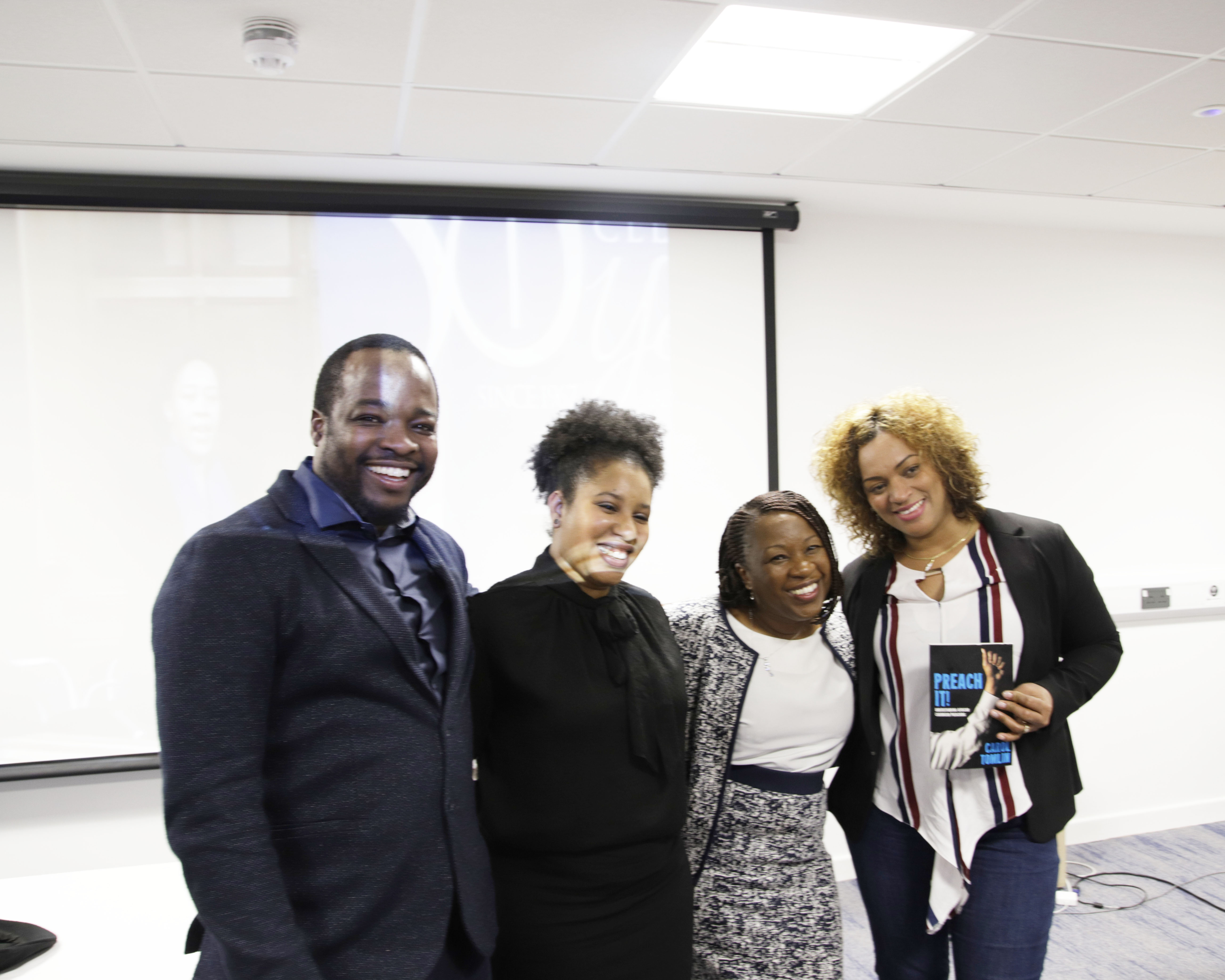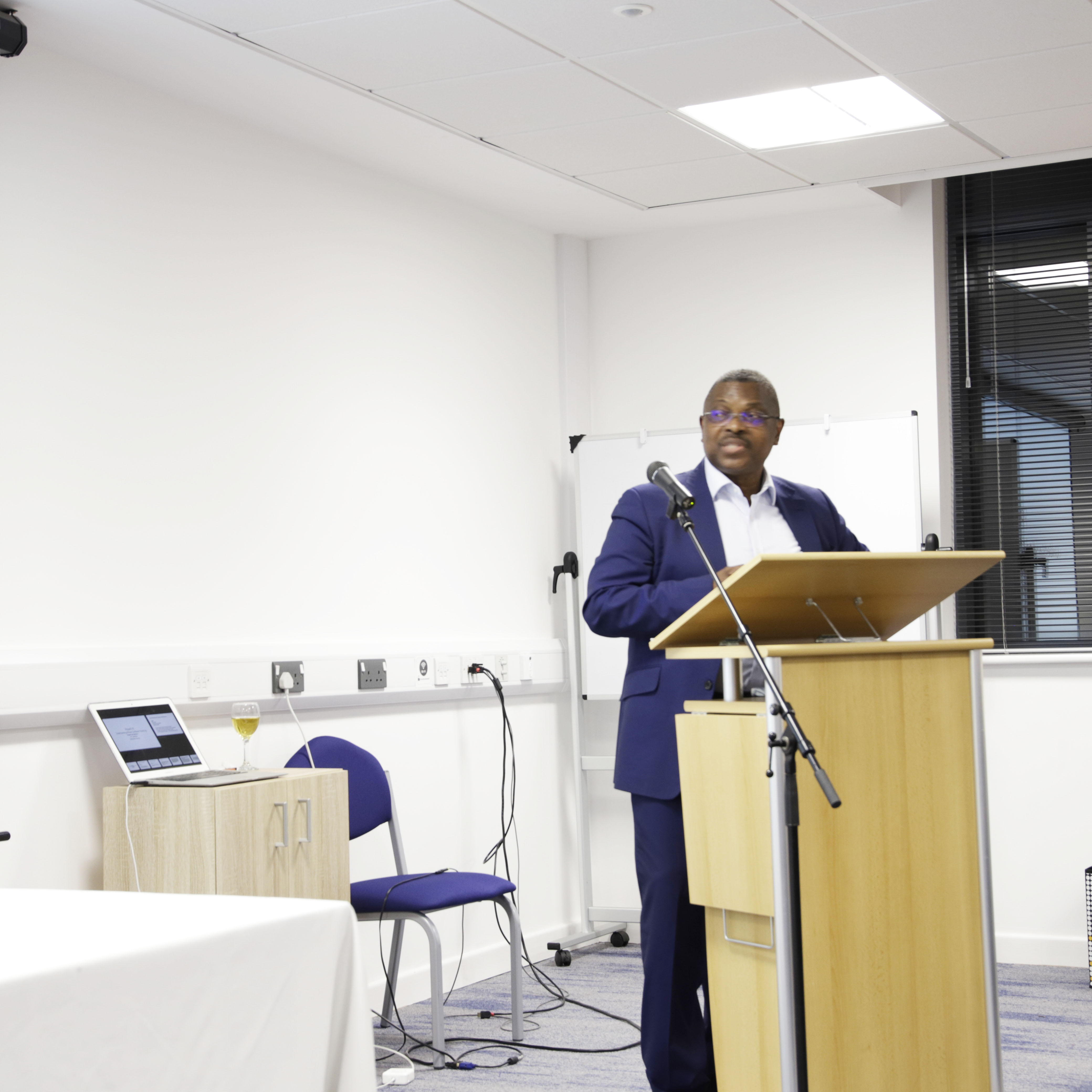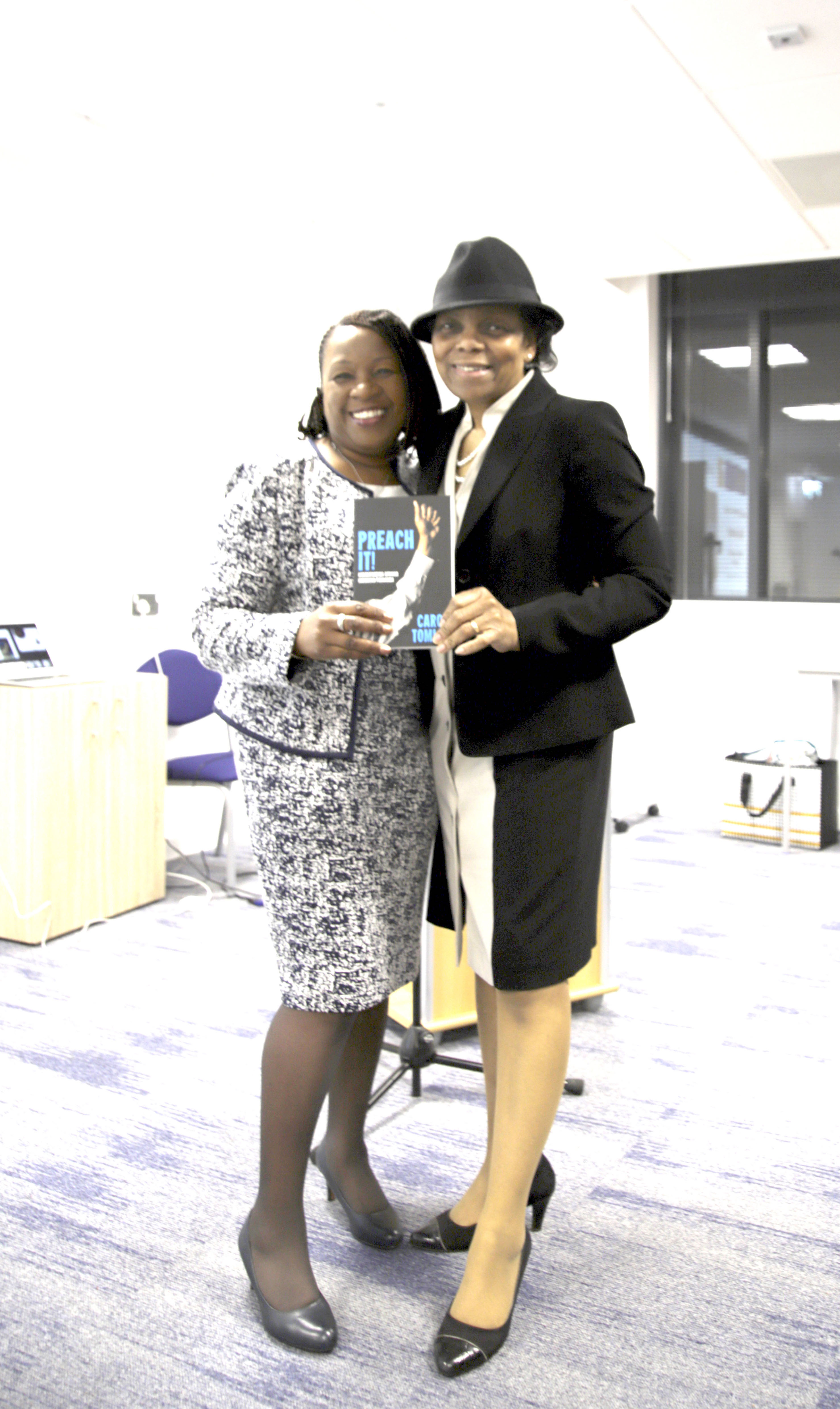Preach It: Understanding African Caribbean Preaching - a book launch report
In this piece, S Kay Oliver covers the launch of Rev Dr Carol Tomlin's new book, entitled Preach It: Understanding African Caribbean Preaching, reflecting on its key themes and questions raised by the audience, alongside 'take-away' messages that could help develop homiletic practices. Dr Tomlin is a visiting fellow in the Centre for Religion and Public Life at the University of Leeds. S Kay Oliver is an author and publisher. She is also a dyslexia assessor and specialist teacher. S Kay is a trained primary school teacher and was a visiting university lecturer.
Rev Dr Carol Tomlin ignited her audience at the Queen’s Foundation, Birmingham, with the launch of her new book titled: Preach it: Understanding African Caribbean Preaching. It aims to scrutinize “the discursive practices of African Caribbean Pentecostal preaching in Britain.” It also contextualises African Caribbean Pentecostalism by providing a historical and liturgical landscape, whilst also offering a toolkit for preaching development. Church leaders, preachers, scholars, students and others listened to Tomlin’s sequential exposition, then reflected and raised questions about Preach it.
 After an epigrammatic introduction, Tomlin’s presentation followed the chapter themes within her book. In discussing the origins of Pentecostalism in Chapter One, Tomlin examined the role of William J Seymour, the son of a slave, and discussed what he
After an epigrammatic introduction, Tomlin’s presentation followed the chapter themes within her book. In discussing the origins of Pentecostalism in Chapter One, Tomlin examined the role of William J Seymour, the son of a slave, and discussed what he
brought to the Azusa Street revival of 1906, which is considered to be the birthplace of modern Pentecostalism. She pointed out that the post-slavery community was oral, hence Pentecostalism’s reliance on an oral liturgy because the main protagonist - Seymour - came from a post-slavery community.
To aid our understanding of African Caribbean Pentecostal preaching, Tomlin provided a description and rationale of Pentecostalism’s journey from the United States of America to the Caribbean, especially Jamaica where it became the fastest growing Christian tradition. Tomlin discussed Africanisms and retentions and indicated that it was easy for Pentecostalism to flourish in Jamaica as religious expressions, such as Pocominia that draws from African religious practices, was already established particularly in the rural parts of the island.
When discussing Chapter Two: ‘Theologies, Liturgy and The Preaching Event’, Tomlin considered issues such as men and women preachers, music and singing, as well as sound and motion. She explained the intense spiritual force of the service, undergirded by the power of the Holy Spirit, as a context for preaching.

Tomlin code-switched and slipped into Jamaican Creole, as she summarised Chapter Three; reflecting on her own oral heritage, a reminder that the Windrush generation brought their linguistic culture to the United Kingdom. According to Tomlin, “hyper-correction” occurred in the speech patterns of the Windrush community who attempted “to mimic the received pronunciation of the day”.
Pictured here and above: Rev Dr Carol Tomlin
Tomlin then highlighted how code-switching is displayed by second generation preachers who developed their ability to switch from standard English to Jamaican Creole. Interestingly, the third and fourth generations have developed what she and Bryan call “Black British Talk” (BBT).
In Chapter Four: ‘The Hermeneutics of African Caribbean Homiletics’, Tomlin identified ten markers for the homiletics, one being Beckford’s ‘Attire as Signifiers’. I actually recall, as a young church member, the emphasis placed on women’s clothing and a consistent reminder to wear a “high enough neckline and a low enough hemline”. Tomlin stated that while this can be seen as an oppressive male practice, it can also be interpreted as a counter culture to the prevailing hyper sexualized consciousness often reflected in women’s fashion.
Tomlin’s examination of Artistic Oratory, exemplifying the genius of this genre of preaching in Chapter Five, was followed by the numerous ways of demonstrating call and response, the democratic and participative key component of the African communication system (ACS). She gave some attention to repetition and its purpose, particularly its functionality for a predominantly oral people, in Chapter Seven. According to Tomlin, political leaders such as Barak Obama and Martin Luther King used this repetition.

Pictured: fellow ministers who attended the launch (left to right is Rev Thabo Mbegabolawe, Rev Tamika Pusey, Dr Rev Carol Tomlin and Rev Marialuz Mbegabolawe)
Tomlin explained the bewitchment hypothesis proposed by Beckford, arguing that with an inherited colonial Christianity, there is a need for exorcism in the theology handed down to people of African descent. Significantly, she explained to the audience that her book extended on Beckford’s theory by arguing that both the colonial successors and colonised descendants could well benefit from exorcism to be ‘free at last.’
However, she emphasised the need for education, cultural security and theological training for African Caribbean people. Finally, Tomlin concluded that African Caribbean preaching has impacted and enriched the spiritual landscape of the United Kingdom.
Interesting questions presented to Tomlin included the issue of men and women preachers, potential negative pitfalls and the qualities of African Caribbean preaching.
Muir’s comments were particularly relevant:
“… We need to make sure preachers add to the spirit knowledge, to the knowledge wisdom, add to the wisdom spiritual insight. Preachers need to be prophetic voices in our age of crisis. Carol’s book takes us along the road in a very nuanced and exciting way…”
Tomlin’s text is a major contribution to the understanding of African Caribbean preaching.
Pictured: Dr David Muir - a reviewer of the book
Take away messages:
What can church leaders across the Christian traditions learn from “Preach It” to develop their homiletic practices?
- Use the reflection and activities located within many chapter summaries as tools.
- Study to develop theological literacy to transform and liberate because care of the soul is mysterious and we don’t know what occurs when the word is preached (Muir)
- Sermons should have a WOW factor, be persuasive, and challenge congregants to action (Muir)
- Do not preach the word for personal aggrandizement – God wants us to be redemptive (Muir)
- On bewitchment – there is a need for African Caribbean people to free ourselves from mental slavery and for both the colonisers and the colonised to be free (Tomlin)

'Preach It' by Rev Dr Carol Tomlin is published by SCM Press and can be ordered here.
Written By: S Kay Oliver (pictured here with Rev Dr Tomlin)
Image Credits: George Oliver
